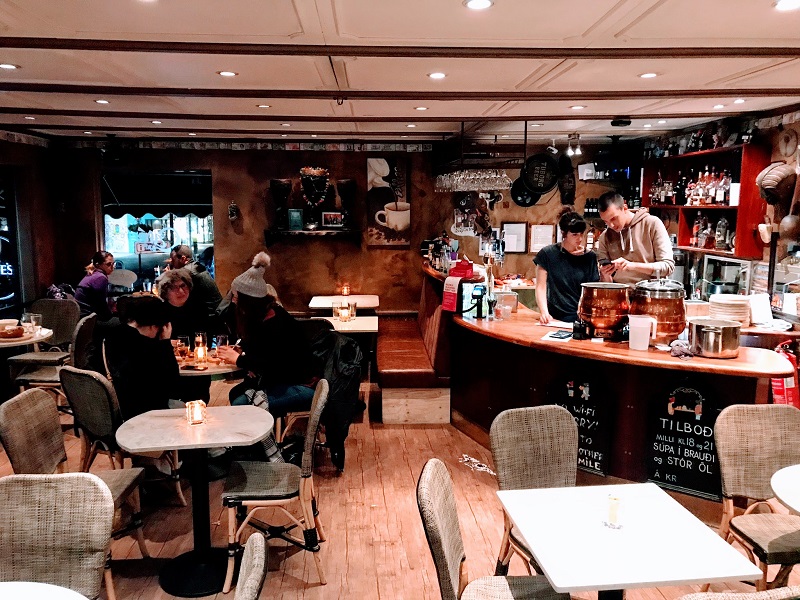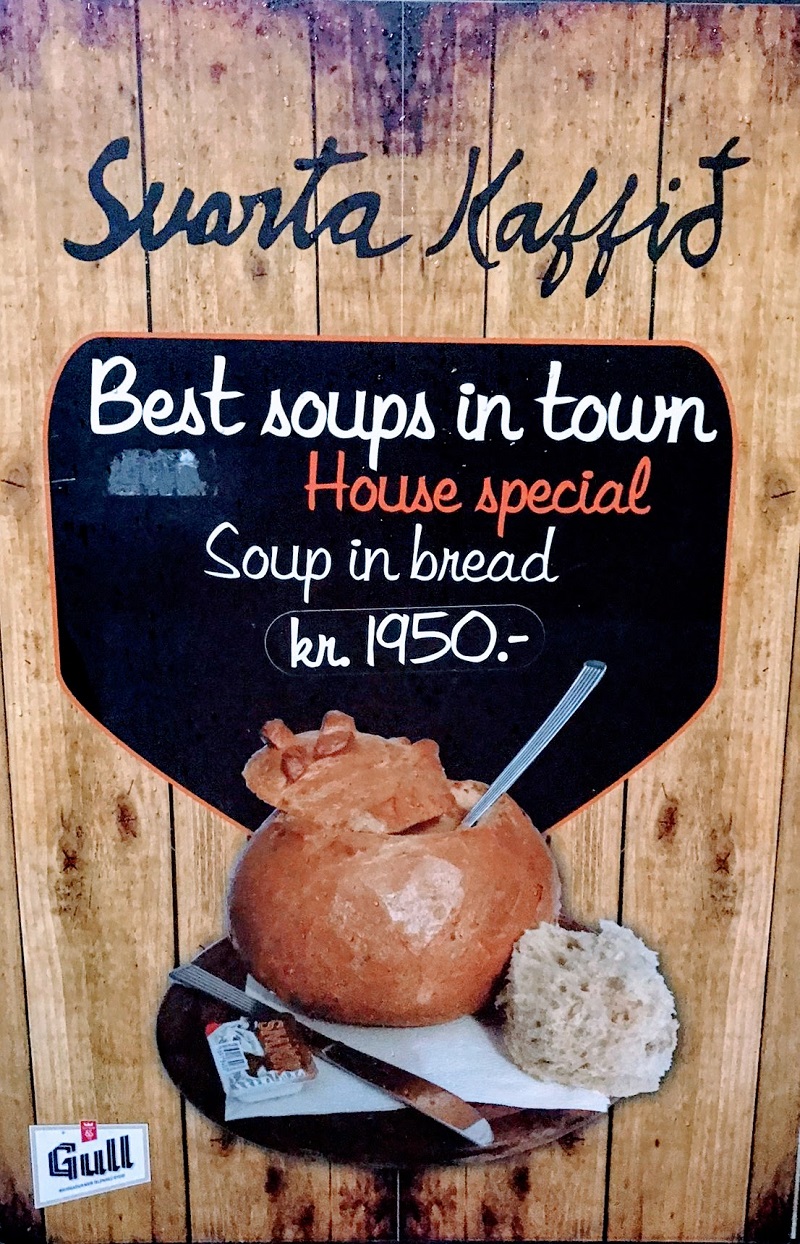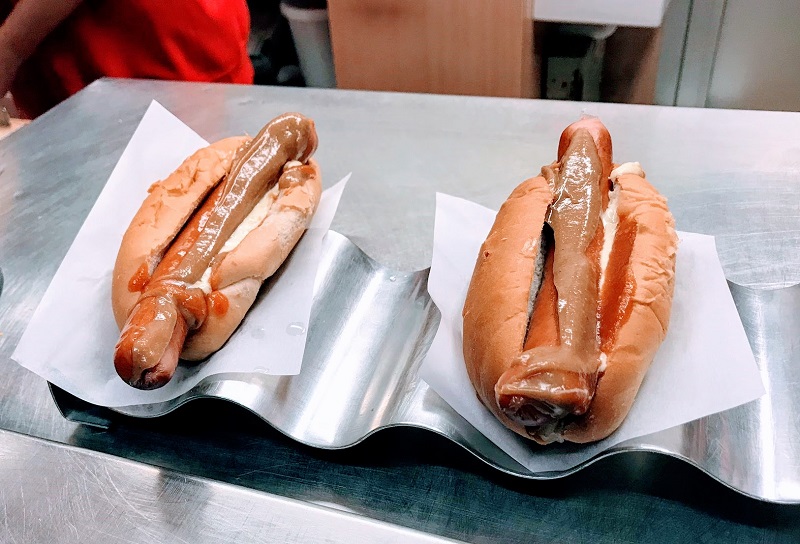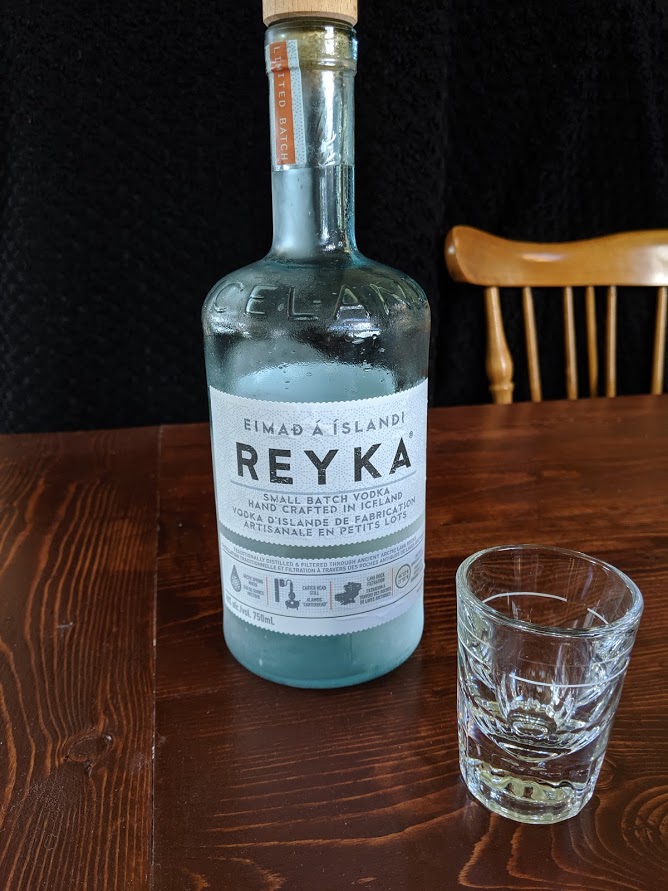Before I visited Iceland, people warned me that food and drinks were expensive in the secluded island country of fire and ice. Since this was a trip on my bucket list, I decided I wouldn’t let that stop me from enjoying everything this remote island nation had to offer. To my surprise, I learned I didn’t have to worry about breaking the bank to eat in Iceland. With Reykjavik’s rising popularity, the city has become a foodies delight, and that includes options for all budgets.
Likely due to their seclusion, most food in Iceland is centred around local accessible fresh ingredients. That means a lot of fish, sheep and rye bread. But that doesn’t mean the cuisine is bland!
Across the street from Hallgrimskirkja church, and conveniently just next to our guest house, is Café Loki, a family-run restaurant specialising in classic Icelandic home cooking. If you are looking for a quick bite to eat or traditional Icelandic food, Café Loki will hit the spot. They also served the best coffee we had in Iceland. Pair it with their rye bread ice cream topped with rhubarb syrup for something unique.

Offering traditional food frequently means a tasting plate of ‘hakari’. Hakari translates into rotten shark in English and is Iceland’s infamous fermented shark dish. This national dish has a robust flavour, of ammonia, and is usually chased with Iceland’s signature schnapps called ‘Brennivin’ or Black Death.
Locals suggest freezing the schnapps to improve the taste. Either way, it helps counter the odd fishy-ammonia taste of the shark. Our local guide informed us that hakari is a long tradition of hanging shark to ferment for four to five months, and residents usually only serve it during Iceland’s mid-winter festival þorrablót.
Another restaurant gem is Svarta Kaffid soup restaurant. The family-owned café prepares two soups a day, one a traditional meat and one vegetarian. Their meat soup is usually a lamb soup since it’s a readily available meat source for the country. The generous portion is served in a bread bowl and is best enjoyed alongside a pint of local beer.

Photo Paige McEachern
If you are looking for something a little more sophisticated, try Skàl where chefs have made a name for themselves using locally foraged ingredients in their dishes. Located in Hlemmur Mathöll food court, the simple set-up of long tables and informal service creates a unique atmosphere. The meals are half the price as other restaurants, but the quality is impressive. A bonus is you get to watch chefs prepare your food, and they have great vegetarians’ options.
One unusual item of Iceland food is hotdogs. With over 1 million sheep and lamb in the country, it isn’t surprising their hot dogs are lamb based. They are served in a bun topped with ketchup, Iceland sweet brown mustard, a mayo remoulade, fried onions and raw onions. It may sound like too many flavours at once, but the combination is surprisingly good! You can get the hotdogs all over Reykjavik, but check out Bæjarins Beztu hot dog stand which has been selling hot dogs since 1937.

Photo Paige McEachern
In preparing for the trip, I was told to buy alcohol at duty-free. Upon arriving, I found out that was a smart move because alcohol is much pricier compared to Canada. It’s also not readily available. In Reykjavik, alcohol is only sold in state-owned liquor stores called Vínbúdin, of which we found few, only open 11 a.m. – 6 p.m. and closed on Sundays. Where I live, you can buy beer and wine in every grocery store, gas station and convenience store, so you can imagine this was an adjustment.
I had to find out why the alcohol laws were so draconian. After all, weren’t the Vikings known for drinking? I discovered alcohol was mostly banned in Iceland in 1915 until 1989. Even when some other alcohol became legalised in 1935, the Vikings favourite drink of ale (beer) was still prohibited until March 1, 1989. That is no longer the case, and I was happy to find a lot of European beers available everywhere, including rest stops of tours, for pretty reasonable prices.
Because I like to try local flavours wherever I go, I had to find out what locals drink. ‘Brennivin’ schnapps is common, but schnapps with Icelandic botanicals are more popular for their more subtle flavours. ‘Bjork’ snaps and liqueur from Foss distillery is a great example. ‘Bjork’ is the Icelandic word for birch, the signature tree of Iceland and is used to flavour the 27.5% alcohol drink. This infusion makes it a lot better tasting than the black death drink.

As with most alcohols made in Iceland, Bjork is made using arctic spring water. This process is also used by the majority of Iceland’s vodka makers too. Most Iceland vodkas are made in Iceland’s capital city Reykjavik and made with pure glacier mountain water which passes through miles of 4,000-year-old lava. This water is found to have zero impurities and heralded as giving Iceland vodka it’s unique taste. I had already tried Reyka, so this trip I tried Reykjavik vodka. The 38% barley-based alcohol is inspired by the steam rising from the geothermal hot springs surrounding Reykjavik. It may have been the crisp Iceland air, but I have to agree that it tasted better than other vodkas. Guess I’ll have to go back again to confirm that it is true.




